Spanish Culture: Traditions in Mexico | donQuijote
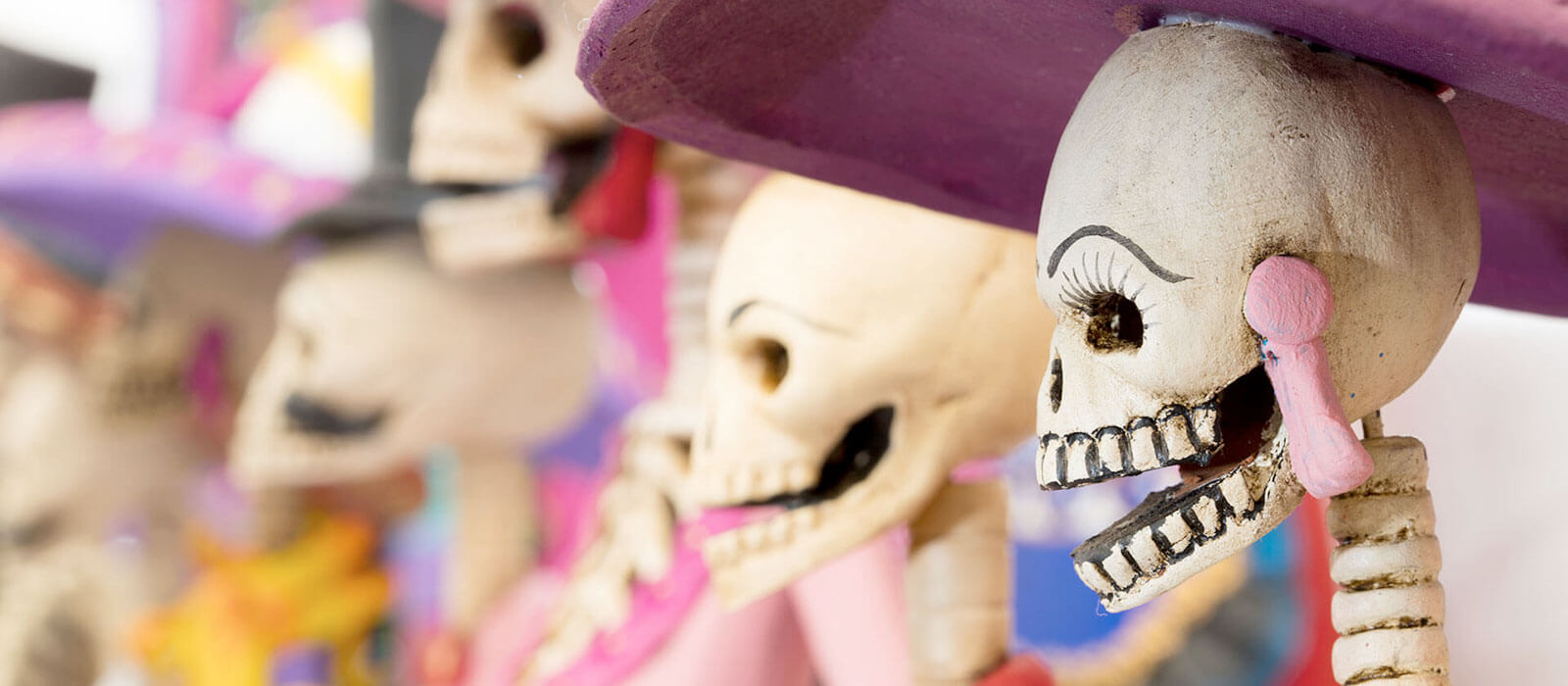
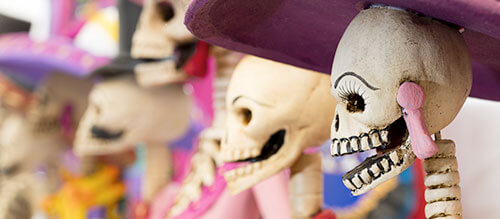


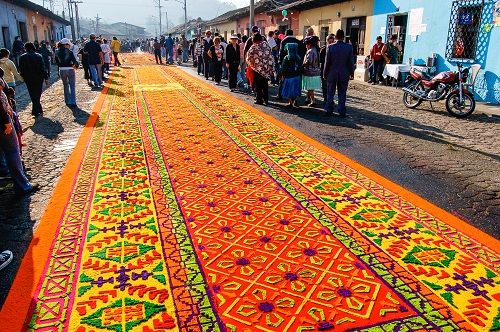
Forget about the Easter Bunny – in Spanish-speaking countries, a whole week is dedicated to commemorating the passion, death, and resurrection of Jesus and yet not once does a furry egg-bearing animal hop into view. Today we’re bringing you some fun facts about Semana Santa, one of the most important events of the year in many countries around the world. Click here to read this post in Spanish.
Holy Week begins on Palm Sunday. Wherever you are studying Spanish in Latin America, on this day the city will be filled with people carrying palm leaves, often braided into crosses and other shapes, to church to be blessed. Afterwards, the churchgoers will take the palms home and hang them over or behind the front door for protection. These palms will be burned the following year on Ash Wednesday, marking the beginning of Lent.

This custom, like many others, harks back to Semana Santa traditions from Spain. Street processions with live music and beautiful floats carrying religious figures through the city can also be found across Latin America. Of course, although there are several common threads that run throughout the Americas, each region’s local traditions and personality is infused into the way Holy Week is observed there.

Many countries follow traditional eating customs with special foods that are typically eaten only during Lent and Holy Week. In Ecuador, that dish is fanesca, a thick soup made with cod and 12 different types of grains and legumes. The fish is said to represent Jesus, while the 12 other star ingredients (which may vary depending on the chef) represent the 12 disciples.

Holy Friday, the day of Jesus’s death, is the most solemn day of Semana Santa. Only a few generations ago in Costa Rica and other countries, people remained mostly silent all day and refrained from bathing or swimming. People who dared to go against tradition ran the risk of turning into a fish.
In Mexico, Holy Saturday becomes a day of fire with the Quema de Judas. Large papier-mâché statues of Judas Iscariote (who betrayed Jesus), the devil, and even different political figures are hanged and burned before the eyes of hundreds of spectators. Like the Fallas of Valencia, this flaming tradition is a powerful sight to behold.

Easter Sunday is a joyful day throughout Latin America. After mass, people gather together with food, music, and dancing to celebrate Jesus’s resurrection. The atmosphere is contagious, and whether or not you’re consider yourself a religious person, you’re sure to enjoy the emotional release.
With so many unique traditions and events, Holy Week is one of the best times to learn Spanish in Spain or Latin America and become immersed in the local culture. If you didn’t make it this year, start planning your trip for April 5-12, 2020!

Halloween is approaching and a small controversy is flaring up: have we Spanish-speaking countries betrayed our roots by turning something as profound as All Souls' Day into something superficial?
Let's take it one step at a time: All Souls' Day is celebrated on the 1st and 2nd of November. In many places the 1st is a public holiday so people go out on the eve, and what better way to have fun the night before a holiday than a costume party? Besides, that doesn't mean we're being frivolous: many people who celebrate Halloween also remember their loved ones on the following days.
Controversy aside, it is curious to see how some countries have adapted Halloween to their culture. Let's give you some examples.

In México, of course, the big celebration is the Day of the Dead, but Halloween is also celebrated. It is curious to see how children have adapted trick-or-treating and go from house to house asking not for sweets, but for donations. On 31 October, costume parties are also held, but with little connection to the typical images of the Day of the Dead. The latter, as tradition dictates, is celebrated when it is due.
In Spain it is the case that, in the north of the country and especially in Galicia, a Celtic festival very similar to Halloween, called Magosto, was already celebrated between 1 and 11 November. However, in Spain they have adapted Halloween to the Spanish in an unexpected way: some families solve the "trick or treat" by giving children Christmas sweets such as nougat or marzipan. Many say this is one of the reasons why by mid-October you can already see all kinds of Christmas specialities in supermarkets.

In Argentina Halloween is celebrated as if it were carnival: parties, dances... a simple party to have a good time. For a while there was also controversy related to the adoption of a foreign custom and it was proposed that instead of monsters such as the werewolf or Dracula, American-style beings such as the Anchimalén goblin, the vampire Ehéie or the Mapuche monster Pihuchén would be the protagonists. The proposal - it's a pity - never came to fruition. What does take place every year in Buenos Aires is the Halloween Run, a night-time marathon in which people dress up in costume.
We were very surprised, we admit, to learn that Halloween was already being celebrated in Colombia in the 1960s, although it was a festival celebrated by urban high society. In the 1970s it spread to the rest of the population. By the way, in Cartagena de Indias there is an indigenous tradition reminiscent of trick-or-treating called Tintililillo: children go around the neighbourhoods singing a little song and asking for a few pesos.
In Costa Rica the celebration of Halloween has served, ironically, to revitalise a somewhat forgotten custom, that of the masquerade. It is a festivity that unites the Spanish tradition of the giants and big-heads with indigenous traditions. Such has been the strength with which the festival has returned that in 1997 it was declared by decree that 31 October should be the national day of the traditional Costa Rican masquerade.

The clash between Halloween and tradition is most evident in Peru. Since 1944, 31 October was established as the day of one of the country's best-known traditional manifestations, the "canción criolla"; however, in recent years many Peruvians have dedicated the day to Halloween festivities. There have also emerged supporters of a third way, "Criolloween", which advocates uniting the aesthetics of one and the content of the other.
Halloween has taken hold, but the traditions refuse to go away, giving rise to parties, celebrations and very curious manifestations. Something very, very interesting.
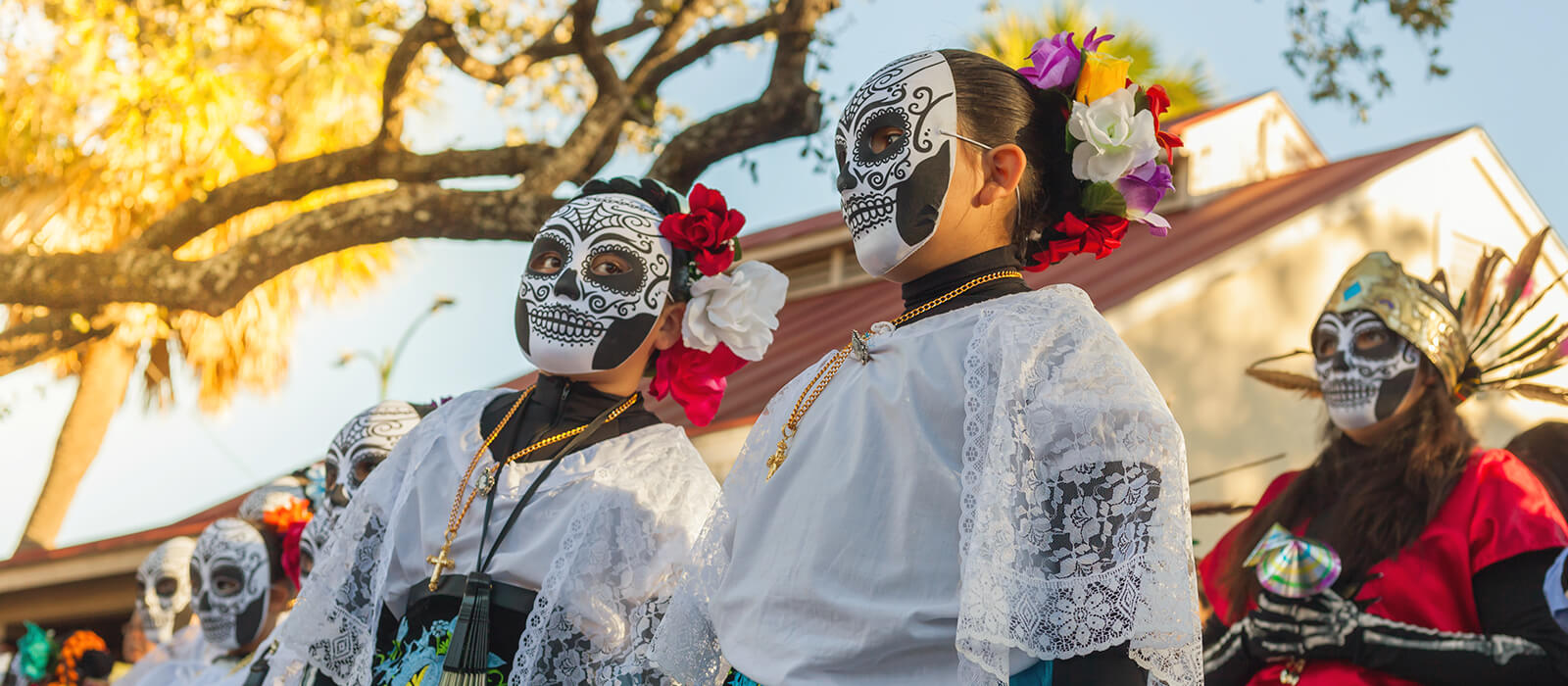
The Day of the Dead is a very special day in Mexico. Far from being a sad or gloomy day, its color, animation and aesthetics celebrate life and its triumph over death. It is something that goes beyond the sweets, makeup, the attire... That is why we are going to show you the meanings behind the beauty of this day.

First we should talk about the eye-catching Catrinas, amusing representations of a skull or bones painted on the face well-dressed women. Its invention dates to 1910, when figures of animated skeletons appeared in the newspapers satirizing the politics of the time. A Catrina, called Garbancera at the time, represented a snobbish sector of society who would dress, talk and act as if they were foreigners, ignoring their cultural roots. The famous painter Diego Rivera fell in love with the persona and gave it the name we all know it by today- Catrina. As such, Catrina has now become the indisputable star of the Day of the Dead and even an "it girl". In fact, the design school of the beautiful city of Leon, in the state of Guanajuato, organizes a fashion show each year where its students show their creations based on this character. In another of our destinations, Oaxaca, these Catrinas are also to be seen, but this time in an eerie procession through the streets.
Typical of this date are candy sugar skulls, a sweet confection called alfeñiques. They are often seen in offerings on the altars that fill streets and neighborhoods during this day, as well as given as gifts to family and friends, often bearing their name. Their roots can be traced to the funerary rites of Mesoamerican cultures, in which the skulls of deceased ancestors were displayed. Today, in Leon, these alfeñiques are also revered in a festival dedicated exclusively to them. There are many, many forms of this confection which fills the stomach, sweetens the spirit and charms the eyes.

The most important and meaningful element is undoubtedly the offering. It has to do with that colorful and fascinating altar that we can see in houses, shops, restaurants... and hides many more secrets than we can imagine.
The altars for these offerings always have seven levels, count them if you want: a photo of a saint or a virgin is placed on the first one; the second is dedicated to the souls that are in purgatory; salt is put on the third level for the souls of the children in purgatory; also in the room, pan de muerto (sweet bread with red sugar), that must be made by the deceased’s relatives, is placed; the fifth holds fruit and the departed’s favorite food; a photo of the deceased is placed on the sixth level and on the seventh a rosary of tejocotes (a yellow, bittersweet fruit) or limes.

Other offerings are present too, also loaded with meaning: candles that must face the four cardinal points; white flowers, symbolizing the sky, and yellow flowers, symbolizing the earth; a rod to protect the spirit of the deceased from all evil... finally there is a path flanked by cempasúchil flowers from the entrance of house to the altar.
With so much symbolism and art contained in these altars, it is not surprising that every year the inhabitants of Guanajuato wait anxiously for the traditional monumental offering that the students prepare on the steps of the University. In another state, Oaxaca, cemeteries become impressive successions of offerings and altars illuminated by the spiritual candlelight.
The day of the dead in Mexico, as we say, has something inexplicable, mystical, lasting. Something that really makes us think that our loved ones still protect us.

Oaxaca is one of the largest cities in Mexico, and is the capital of the state of the same name. It is a city that is particularly popular for its diverse traditions and cultures, as well as its historical past. Oaxaca is also especially famous for its food, indeed it has been hailed as “Mexico’s culinary capital”.
One of the most exciting cities in Mexico, Oaxaca enjoys a mixture of indigenous and colonial cultures
With numerous historic sites and a World Heritage Site within its walls, Oaxaca, Mexico has some of the most beautiful pre- and post-colonial relics to be found in Mexico
The site of Oaxaca has been inhabited by indigenous populations for centuries, and following the Spanish conquest in 1521 the city itself began to be built. A Spanish commander arrived with some Aztecs who constructed the first houses and churches, and they began to build the cathedral in 1522. From this point there were several disputes between Hernán Cortes, who lead the conquest of Mexico, and those that settled in Oaxaca; indigenous and Europeans alike. Following these disputes, it was not until 1532 that King Charles of Spain declared Oaxaca as a city to be ruled by the Spanish monarchy directly, rather than Cortes; this was deemed a huge victory for the population of the city as they were able to retain the traditions and architecture that today make Oaxaca so special. Mexico gained its independence from the Spanish in 1821, and naturally Oaxaca gained its independence at the same time.
Today, Oaxaca is one of the most popular cities in Mexico for tourists. Typically it is most popular in the summer, thanks to the temperate weather, but due to its location near the equator, Oaxaca has a pleasant climate all year round and attracts tourists in all seasons. It was named a Cultural Heritage of Humanity city by UNESCO, thanks to its innumerable historic and culturally important buildings.
Some of the most notable sites in Oaxaca are the Plaza de la Constitución where you can sit in a café and enjoy traditional Oaxacan foods. Similarly, the pre-colonial city of Monte Albán is particularly famous, as it houses artefacts from thousands of years ago. This ancient city was also named a UNESCO World Heritage Site, along with Oaxaca itself. The Plaza de le Danza y Jardín Socrates is also very popular. With beautiful gardens in the centre of the city where artists often go to display their work, and a square that hosts dances and festivals, it is a particularly bustling area and very popular with tourists.
The culinary scene in Oaxaca is particularly famous. The Mercado 20 de Noviembre (20th November Market) is well known for its food products that are made freshly every day and showcase Oaxacan cuisine; moles (traditional Mexican sauces), chapulines (fried grasshopper) and pan de yema (egg bread). Much of the food in Oaxaca is influenced by indigenous and Spanish recipes, while it also has connections to the religious and family-oriented nature of Mexican culture. Tables are often put down the middle of the street, usually on Sundays and Holy Days, and the whole community comes together to celebrate; the traditional Oaxacan dishes feature greatly on these feast days.
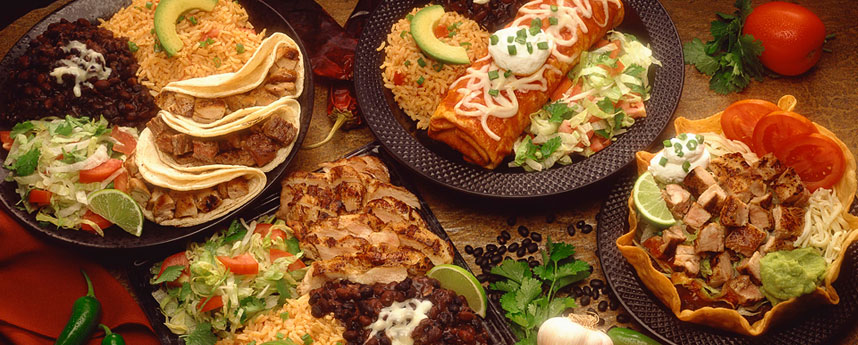
A culture consists of several aspects, one of which is food. The customs and dishes of a culture are characteristic of a country or community. Mexican cuisine is now known all over the world, but once began with a little corn and influences from different parts of the world. The rich flavor and cheerful appearance of Mexican dishes have enriched cultures around the world.
Mexican cuisine is best known for its spicy dishes and sauces, and it is no lie when we say that the food is perhaps one of the spiciest. This culture loves the chili pepper; the sweet as well as the picante variety. It is therefore not surprising that this pepper can be found in almost every dish; if you don't see it, you will taste it. It is one of the main ingredients of a Mexican dish and also the most representative of Mexican cuisine. There is no Mexican dish without chili. A famous priest (Bartolomé de las Casas) once said, "Sin el chile los mexicanos no creen que están comiendo" (Without the chili, Mexicans don't consider it real food). Besides chili, corn is a basic ingredient in all Mexican dishes. It is known that corn has always been produced in México and today there are even 42 types of corn grown. It is indispensable in the cuisine of this culture.
Not only corn, but also grain is widely used in México. It is mainly used to make bread, since Mexicans consider bread an essential side dish, but it is also a base for the tortilla de harina; a tortilla made of grains, instead of corn. Other well-known side dishes include vegetables, which of course include beans, and rice, which also really should not be forgotten in a typical Mexican dish. Chocolate, which is now available and popular all over the world, originated in México. It dates back to the era of the Olmecs (los Olmecas), but it is still an important ingredient in Mexican cuisine today and is mainly used as a flavoring in sweet dishes.
The eating habits of Mexicans are closely linked to the occasion on which the meal takes place, the origin of the people preparing it and even to the seasons. Overall, we can name four main moments of the day. During el desayuno, breakfast, you can enjoy a delicious muffin, for example, or try the chilaquiles; corn tortilla chips with scrambled eggs, sauce and sometimes even chicken. The most important meal of the day is la comida, lunch. It takes place between 1 and 4 p.m. and is traditionally very elaborate and filling. Soup is made as a starter, often with rice, noodles or pasta. The heartiest meal is the so-called stew with rice, beans and/or salad as a side dish. Several well-known recipes from Mexican cuisine also come into their own at lunch: the famous tacos and burritos and the universally popular chili con carne and nachos.
Lunch concludes with a dessert that consists of something sweet, coffee or a digestif. When an early lunch is held, Mexicans take time around 5 to 6 p.m. for a merienda; an afternoon tea. It is often a reunion of friends or family where they consume mostly sweet things. Only after 8 p.m. does dinner, la cena, take place. It is a dish similar to the main course from lunch. It is often accompanied by roast meat (beef, pork or chicken) and a boiled/fried sweet potato. Nowadays, Mexican meals are lighter and less elaborate, but you can still enjoy, for example, quesadillas, chilaquiles or huevos rancheros just as much.
Not only is the food from Mexican cuisine typical of this culture, but the, especially alcoholic, drinks from México are also worth trying! The alcoholic beverages originally from Mexican cuisine can now be enjoyed anywhere in the world. However, there is one exception; el pulque. The places where you can get this drink are limited to México only. In addition, there are a places where you can worship the goddess Mayahuel (the goddess of el pulque). These places are so rare that nowadays they can almost be considered museums. The most famous drink from México is, of course, el tequila, the pick-me-up of México. Originally tequila was drunk as an aperitif and since then it is still drunk today with salt and lemon. In addition to tequila, another drink is also made in the state of Jalisco: el mezcal. An agave drink that, like tequila, has a typical taste and smell that makes the drink special. Finally, of course, we cannot forget Mexican beer with its soft, delicate taste for one kind and its strong, intense taste for another. Mexican beer is drunk from a bottle with a slice of lemon in the neck of the bottle. People believe this is to kill any bacteria, but nowadays it is done more as a tradition.

Often foreigners have doubts or hesitations when they greet or meet someone in Spain. Should they give a kiss on the cheek? Is it appropriate to give hugs? It is very usual to have these kind of questions when you first get to know a country or culture.
Both in Latin America and in Spain greetings are generally handshaking and on informal occasions kissing on the cheek, even among strangers. In Colombia the usual greeting among men is a handshake. Women, however, prefer a verbal greeting or kiss on the cheek. The greeting in Argentina in most cases is a single kiss on the cheek even among men, although it depends on the degree of familiarity. In Mexico, for example, the greeting between two men is limited to a handshake.
In Spain, it is advisable to distinguish formal situations from informal ones. The greeting with a kiss is seen among people who have a close or family relationship: between parents and children, close friends etc. Men do not often greet each other with kisses unless they have a family relationship instead they rather shake hands. It's not often give hugs when introduced to someone, this is available for people who maintain a close relationship as friends or family. Between friends, in addition to hugging often accompanies with a pat on the back.
For verbal greeting, “¡Hola!” is used as a valid and neutral greeting almost any occasion yet on formal occasions, it will be more correct to use expressions like “¡Buenos días!”, “¡Buenas tardes!” and “¡Buenas noches!” which also can be used to say goodbye. On informal occasions, there are a variety of expressions like: ¿Qué pasa?, “¡Buenas!”. If you are introduced to someone new, you can say Encantado/a or Mucho gusto. And while saying goodbye generally these expressions are used“¡Hasta luego!” , “¡Nos vemos! or simply" Chao! ".
After a while you get used to both customs and the culture and there is no reason to hesitate to do the right gesture as Spanish people are very welcoming and warm. However, if you are still in doubt, you can wait for the first move and do what the other person does. Bear in mind that best things in life happen at the hellos and goodbyes!
Here is a small list of Spanish vocabulary used at greetings and farewells: